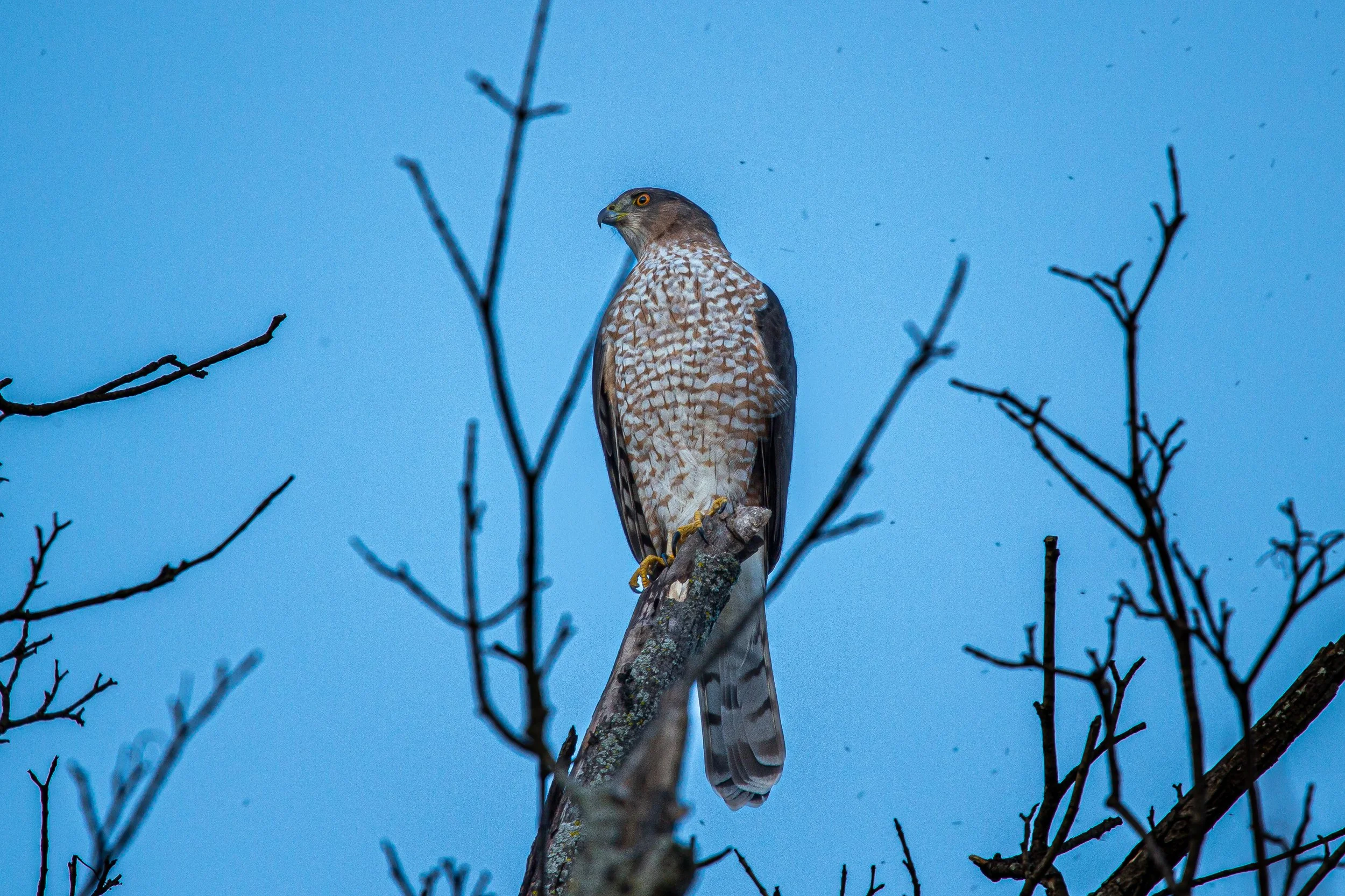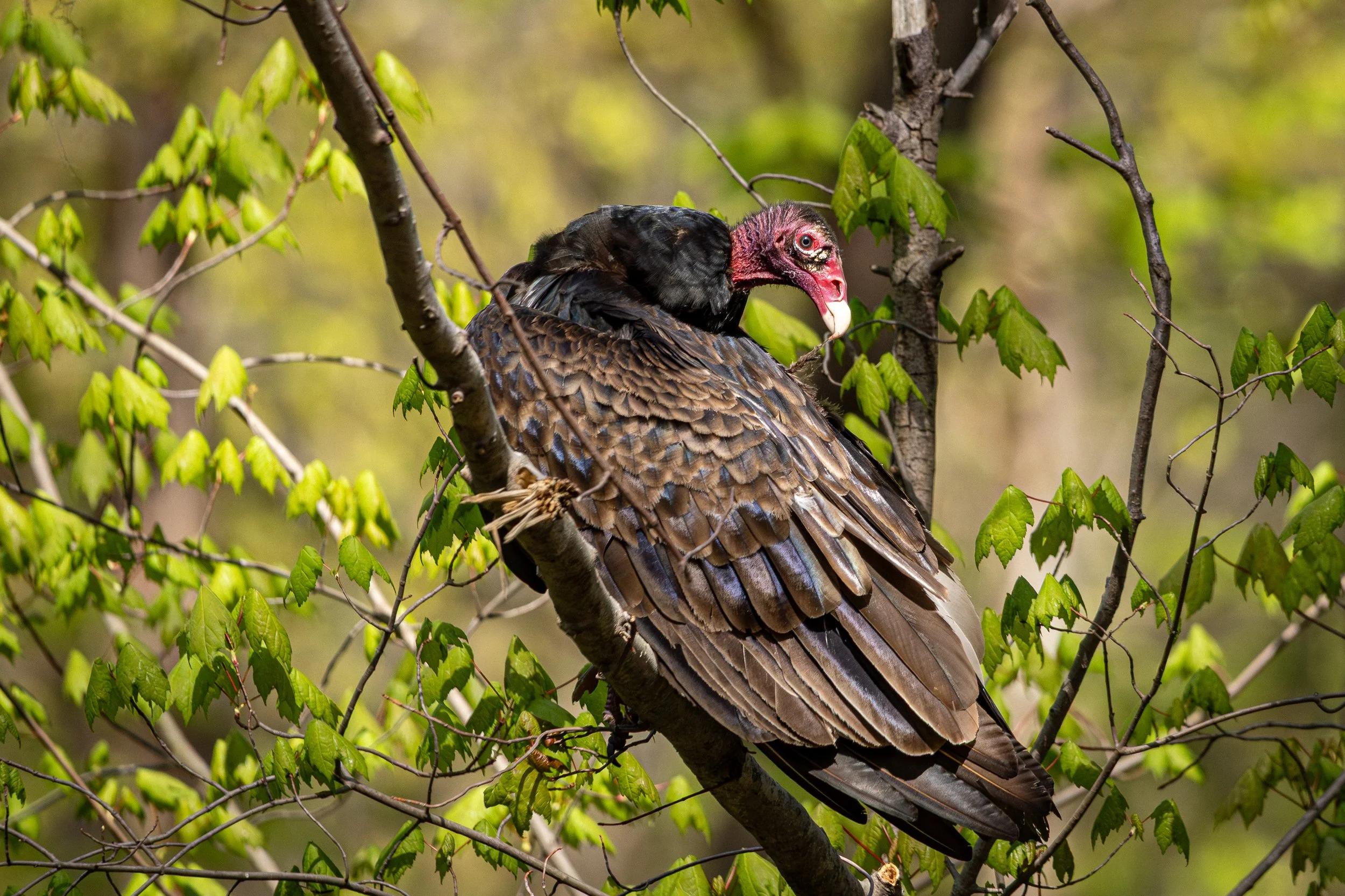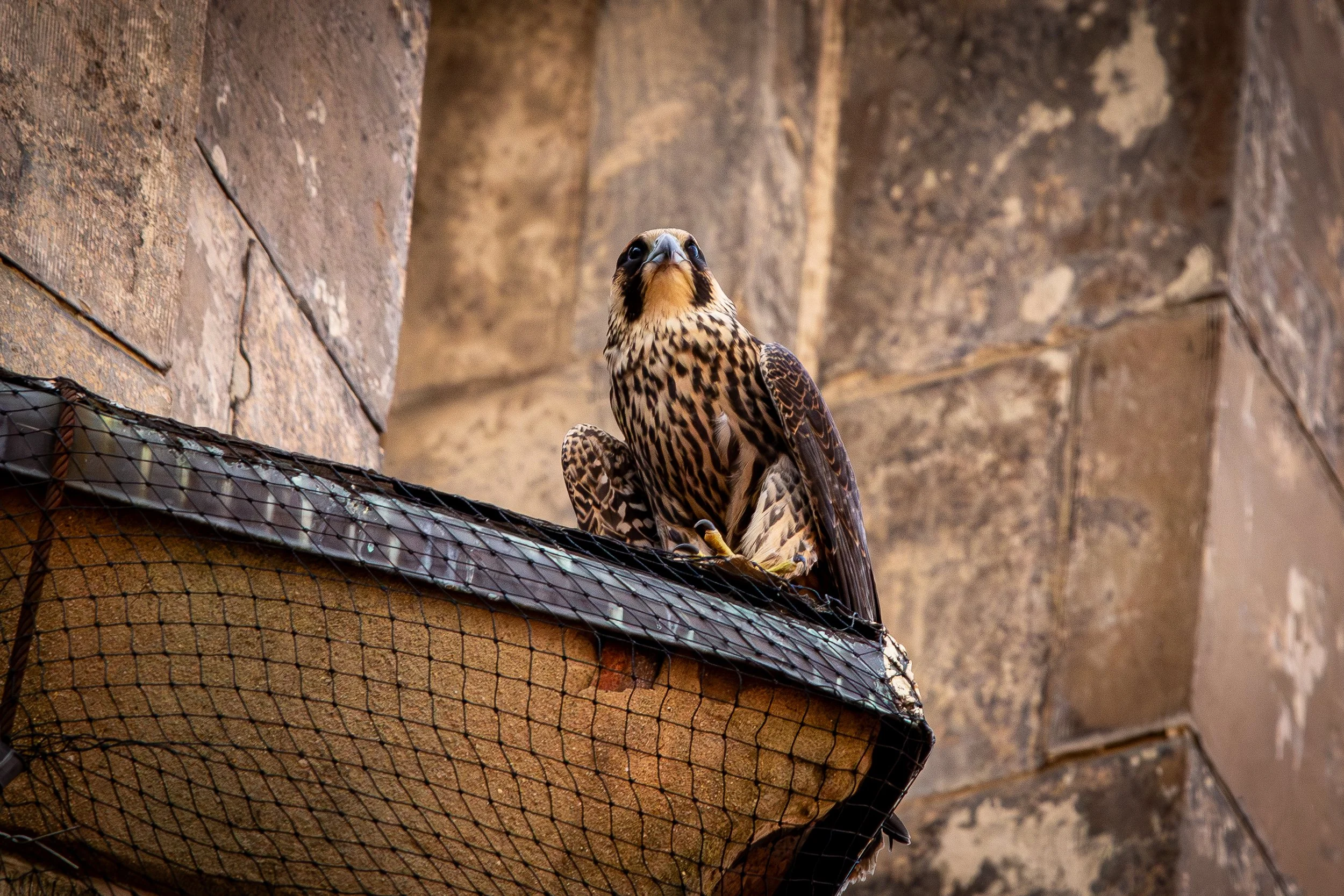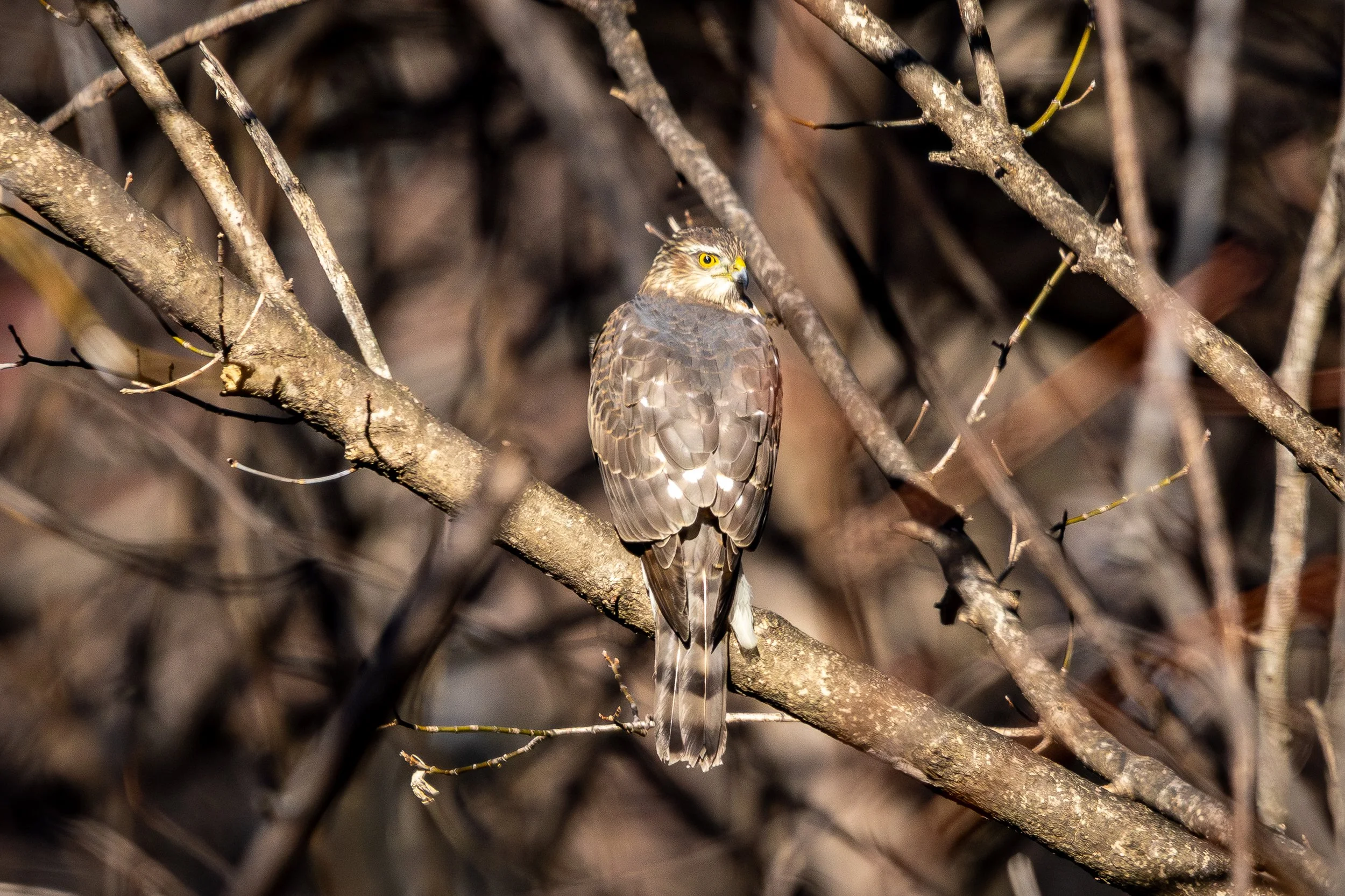
Raptors of the big apple
Entertainers and Icons

Birds of Prey are the most visible and charismatic predators in New York City. From adorning our State Flag to being the logo of New York City’s Urban Park Rangers, Birds of Prey are everywhere you look. Browse the images below to meet some of the Raptors of Gotham!

Bald Eagle

Red-tailed
Hawk

Osprey

Cooper’s Hawk

Turkey Vulture

Red-Shouldered
Hawk

Northern
Harrier

American
Kestrel

Peregrine
Falcon

Broad-Winged
Hawk

Black
Vulture

Sharp-shinned
Hawk
